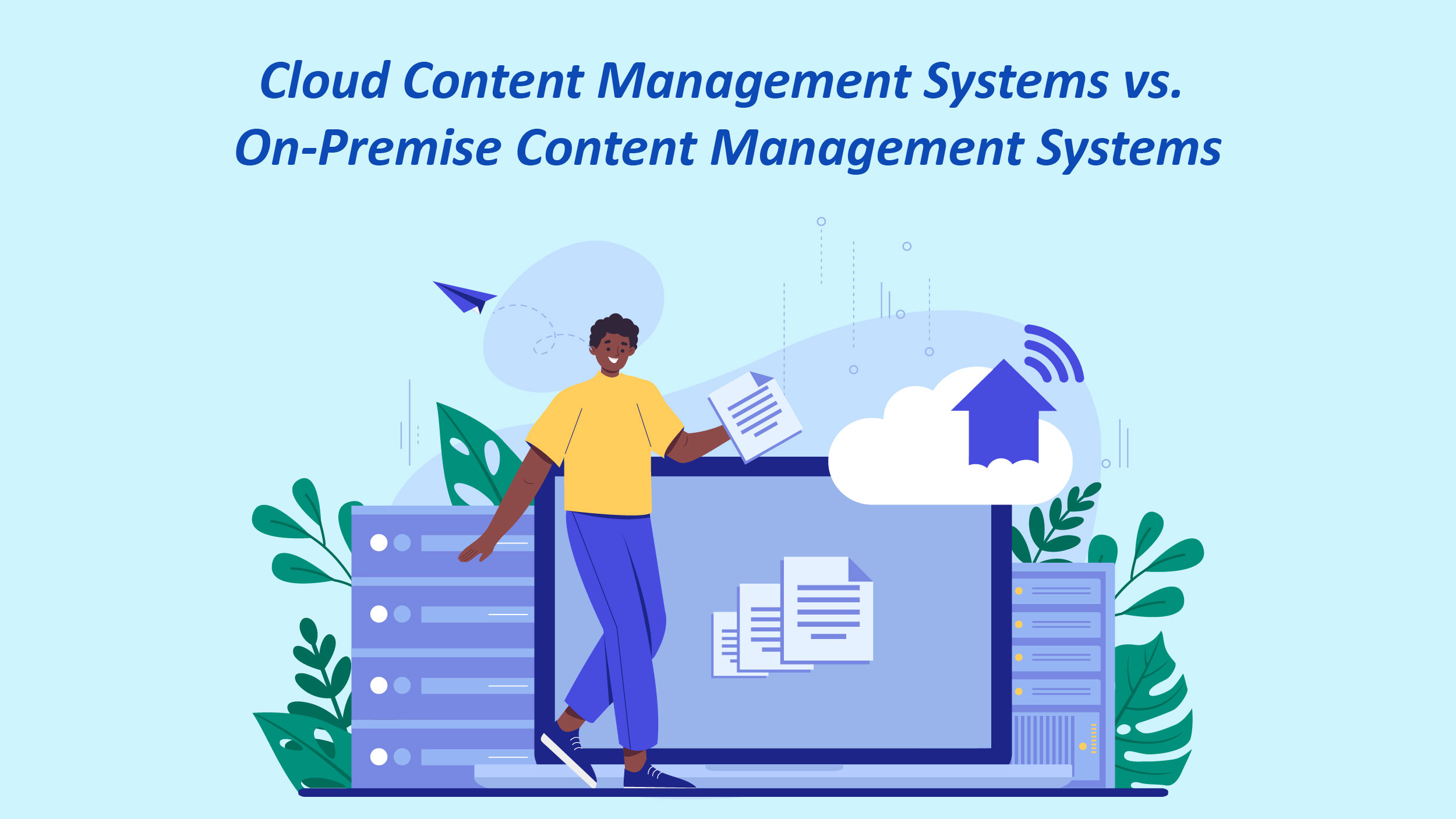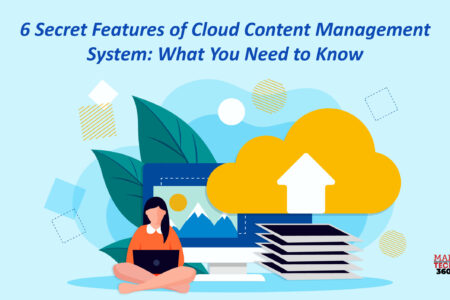Creating content is just the beginning; staying ahead of the curve is crucial for marketers. Yet, the constant battle against time makes it challenging to execute campaigns promptly and stay relevant.
In the blink of an eye, the buzz around a new campaign can fizzle out before it even takes off!
Imagine if teams could work together in real-time, implement changes swiftly, and streamline approvals. This would mean efficient collaboration and seamless workflows, regardless of your team members’ location. This is where cloud content management comes in.
Embracing a cloud-based collaboration system doesn’t just change how teams function; it positions organizations at the forefront of the competition. In this post, we’ll explore the ins and outs of cloud collaboration, its significance, and how it can give organizations a competitive edge.
What is Cloud Content Management?
Cloud content management (CCM) goes beyond mere storage; it’s about handling, organizing, and ensuring smooth workflows internally and externally. It liberates organizations from the constraints of traditional server infrastructure, offering a flexible and accessible way to manage content.
A content management system housed in the cloud is called a CCM system. In contrast to conventional content management systems that are located on-site, CCM systems eliminate the need for businesses to purchase their own networking or server hardware. Although cloud-based systems continue to be adopted by businesses for these reasons, there are other important reasons why moving to a CCM system is essential in the modern business world.
The best part of cloud-based content management? Complete access and cooperation, at any time and from any location!
Now that we know what the CCM system is, let’s examine how it varies from other management systems.
Cloud Content Management Systems vs. On-Premise Content Management Systems

Compared to the efficiency of cloud CMS, basic on-premises systems exhibit limitations, including potential pitfalls and security vulnerabilities.
Below is the tabulated difference between the two.
| Aspect | Cloud Content Management System | On-Premise Content Management |
| Accessibility | Accessible from any device/location with the internet. | Restricted to specific devices or networks. |
| Scalability | Easily expandable to adapt to changing business needs. | Limited by hardware constraints; expansion requires additional investment. |
| Integration | Inherent compatibility with cloud platforms. | Demands custom development or third-party plugins. |
| Collaboration | Facilitates collaborative work with real-time updates. | Lacks support for real-time collaboration. |
| Maintenance | Involves minimal IT intervention, ensuring less downtime. | Manual updates, IT-intensive, with potential downtime. |
| Workflow | Streamlines tasks, approvals, and processes. | Lacks sophisticated workflow tools, relying on manual processes. |
| Accessibility | Accessible from any device/location with the internet. | Restricted to specific devices or networks. |
How Does Cloud Content Management Platform Work?
Cloud content management software operates using different cloud computing models like SaaS (Software as a Service), PaaS (Platform as a Service), IaaS (Infrastructure as a Service), and CaaS (Content as a Service), depending on its specific structure and features.
In this system, digital content is stored in remote servers provided by cloud service vendors, consolidating all digital content in one centralized location. This approach allows users to generate content from diverse devices and locations, ensuring access to files whenever necessary.
Now, let’s explore how the cloud content management system functions based on the following points:
- Cloud Infrastructure:
- Provides network, storage, and resources for server management.
- Doesn’t require external server management.
- Global data centers ensure 24×7 availability and automatic recovery from failures.
- Content Storage:
- Single centralized repository for all content.
- Ensures consistency and effective business processes.
- Scalable storage on demand without physical hardware upgrades.
- CDN (Content Delivery Network):
- Enables rapid content delivery to diverse locations and digital channels.
- Quick loading time is crucial for businesses with a larger user base.
- Easy Integrations:
- Supports integration with third-party applications effortlessly.
- Enhances capabilities by integrating with CRM, marketing automation, and analytics tools.
- Facilitates staying competitive and adapting to the digital landscape without extensive development and cost.
Also Read: Decoding Success: Video Optimization Practices You Can’t Afford to Ignore
6 Best Features of Cloud Content Management Systems
1. Digital Asset Management:
- 90% of organizations use cloud-based software for digital asset management.
- Efficiently manages digital assets, streamlining workflow and distribution.
- Enhances operational efficiency by making assets easily accessible and manageable from any location.
2. Improved Collaboration:
- 86% of leaders attribute workplace failures to a lack of collaboration.
- Fosters collaboration through real-time editing and preview features.
- Enables simultaneous work on documents, eliminating the need for back-and-forth emails.
- Facilitates effective teamwork and ensures everyone is on the same page.
3. Content Analytics and Insights:
Guides data-driven decision-making by understanding audience behavior and demands.
Enhances content marketing efforts and improves targeting for better conversions.
4. Version Control:
- Allows multiple team members to work on the same project simultaneously.
- Maintains a detailed history of changes, minimizing errors and providing easy rollback options.
5. Automated Workflows:
- Streamlines tasks by automating routine and time-consuming activities.
- Ensures consistency and reduces the chance of human error.
- Automates content approval processes for efficient operations.
6. Security:
- 51% of organizations plan to increase security investments.
- Ensures robust security through data encryption during transfer and storage.
- Safeguards organizational trust and integrity by minimizing security threats.
Closing Thoughts
In a nutshell, the key lies in streamlining the cloud content management system to elevate team productivity. In a landscape where information is in constant motion, embracing CCM emerges as a powerful ally. By adopting a marketer-friendly system that simplifies content creation and distribution, organizations pave the way for enhanced efficiency and success.

